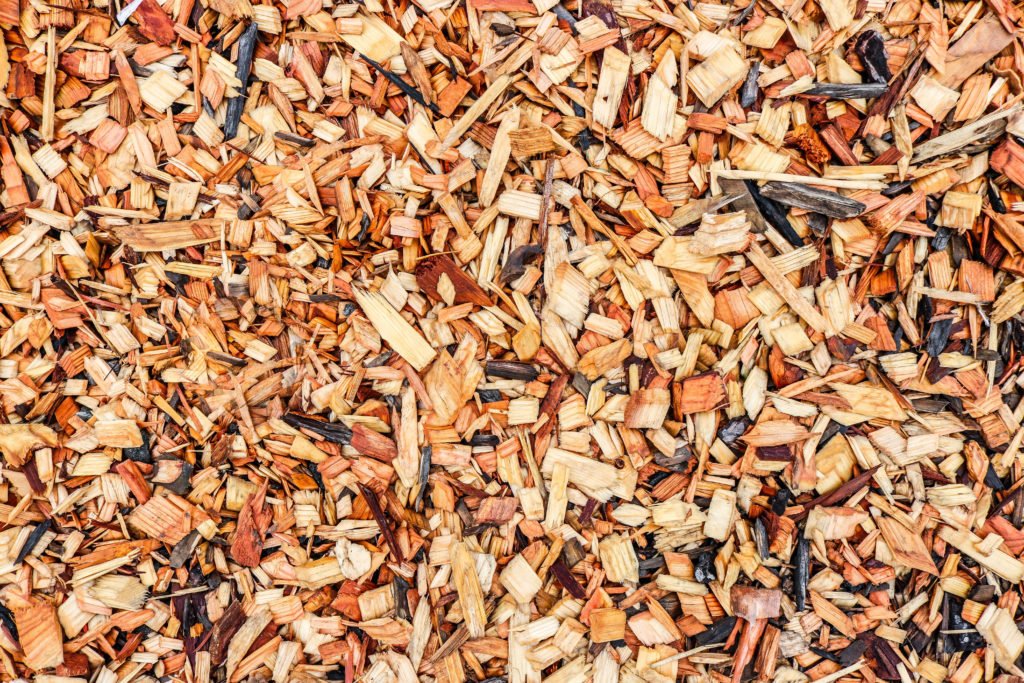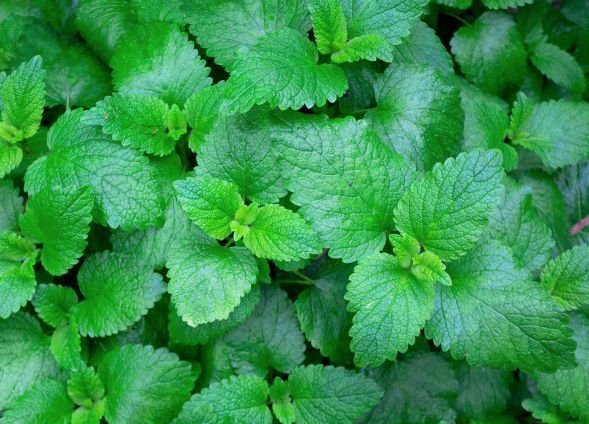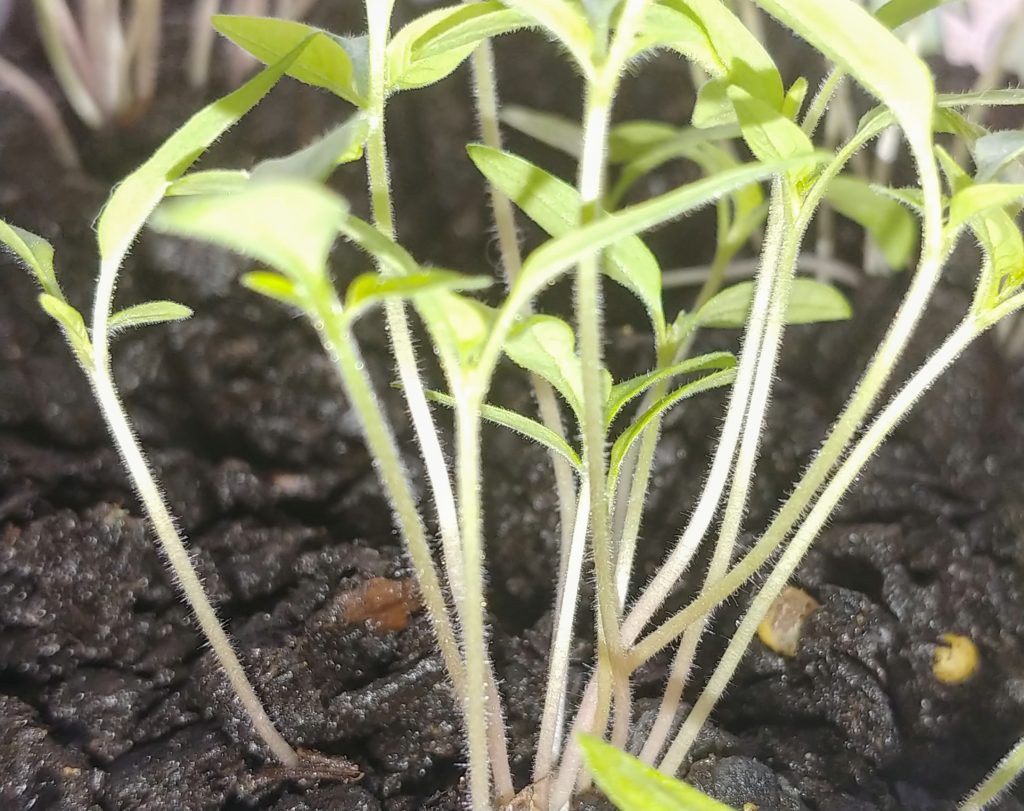While our love affair with home grown tomatoes is deep, there is one thing we always conveniently forget to do and that is pruning the tomatoes. “Do my tomato plants need to be pruned?” is a question I ask myself at the very beginning of the growing season summer.
Growing tomatoes every season is one of the things we all look forward to the most. Watching them grow tall, flower, and produce fruit time and time again is just fun. There is just nothing like a fresh, sweet juicy tomato right from the garden!
They are producing finally, why would I want to cut them back?! Then, the inevitable happens: the production stall. It’s like every year, I get this great amnesia and never remember how important pruning tomato plants really is.
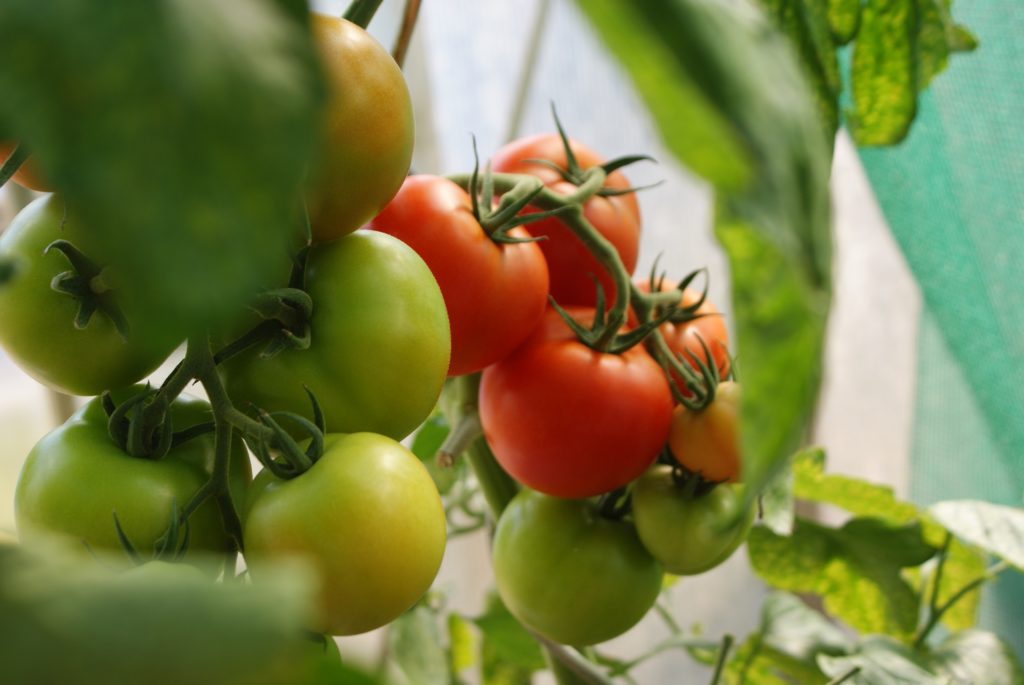
This post contains affiliate links. If you click through and make a purchase, I may earn a commission, at no additional cost to you!
Why Tomatoes Aren’t Growing
“The production stall” is what I like to call the time frame between the first or second nice harvest and the two weeks I realize, ‘oh, I need to trim the tomato plants’. So, the answer is, yes, you likely need to prune depending on the plant type.
Here, you’ll figure out which tomato plants need pruning, how and why you need to prune your plants. First, you’ll need to know if it’s a determinate or an indeterminate variety.
Benefits of Pruning
There are quite a few solid benefits for maintaining and keeping up with your plants. While some folks don’t bother, we find these reasons extremely helpful:
- Pruning the lowest limbs improves air flow to stems and roots.
- Improved airflow reduces changes of disease.
- Removing damaged or dead leaves saves the plants energy from trying to heal to ripening.
- Increased yield and longer grow season for indeterminate varieties.
- Faster ripening
- Promotes a stronger plant structure by reducing necessary weight and tangles.
- A cleaner plant structure leaves less room for plant pests.
![How to Prune Tomato Plants [Everything you need to know] ripe tomatoes growing on a plant](https://www.ahappygarden.com/wp-content/uploads/2019/08/How-To-5-683x1024.png)
How to Prune
Now that you know which type of plants you have, let’s discuss how you will prune the indeterminate plant. First things first, you need really good, sharp, and clean pruning shears like these.
As the pant begins to grow, you will begin to notice many different stems sprouting from the main stem.
So, what leaves do you need to prune on a tomato plant? While you do want to allow growth of multiple branches, the general rule of thumb is to remove the ‘suckers’.
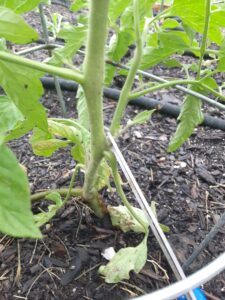
The suckers of all plants should be pruned. To do this, identify the first flowering stem and clip any growth below it. You want to target the ones that are closer to the ground, and look like off shoots of larger, thicker, more sturdy stems.
Pruning Methods
So as you create your method of working that works best for you, you’ll want to know when is the right time to prune tomato plants.
Another method you’ll want to incorporate to your pruning routine is pinching off the flowers. When should I pinch out my plants, you may be asking?
You’ll want to do this once the plant starts growing its fruit. Not only will you want to do this at the early stage of growth, but you’ll want to do this throughout the plant lifecycle.
Once the plant starts bearing fruit, you’ll want to allow all of the plants energy into ripening those giant tomatoes. Having too many flowering leave and off-shooting suckers will decrease production and slow down the plants ability to full ripen existing fruit.
Disregarding the pruning stage will also prevent more fruit from growing. Allow the plant to cycle through a full growth-to-ripen stage.
You should prune the suckers out regularly, aim for every two weeks. This will allow more sun and aeration to the soil level. The timing of pinching off the flowering stems will dependent on how often your plant is producing.
You’ll also want to get an aggressive cut in the mix by chopping off a few non producing stems about halfway through the season. This is for the same reason.
You don’t need those extra stems taking energy away from the producers!
Determinate Tomato Plants
Determinate tomato plants are the type of fruit producing plant that needs little to no pruning. They are considered ‘bush’ plants and can grow in a contained pot with little support.
These types grow smaller and remain rather compact.
The growth, flowering, and ripening of the tomato will happen at the same time. Within three months, you’ll see your plant fully mature and it’s cycle will be complete.
Determinate plants can grow in self contained with ready made support containers like this one.
You might even get lucky enough to find it already planted and matured at your local nursery! Definitely hold on to those container cages for future seasons if you do!
One thing to remember with determinate varieties is that you don’t want to pinch off the flowers when they start growing. This will reduce your harvest and stunt production.
Types of Determinate Tomato Plants
- Celebrity – fruit size is about 7 oz – great to eat as-is
- Plum – fruit size is about 4oz. – A good tomato for pasta sauce
- Roma – fruit size about 3oz – Preferred tomato sauce variety
- Valley Girl – fruit size is about 7oz – very flavorful, rapid producer
- Gold Nugget – small cherry size tomato, yellow color – good for snacks
- Skyway – Larger variety with fruit approx 10oz
Indeterminate Tomato Plants
Indeterminate tomatoes are the ones that you plant in the ground, allowing for a lot of space between seedlings. You also want to support them as soon as you plant them with stakes and/or cages.
The sooner you support them, the easier they will be to manage. Indeterminate tomatoes can grow rather large and do require regular pruning. They can reach heights well above 6ft tall, and can tangle into other plants, and each other.
Indeterminate varieties will continue to flower and grow fruit throughout your growing season until regional frost sets in. They often have a longer maturity time but produce large fruit.
Types of Indeterminate Tomato Plants
- Beefmaster – large fruit size, can grow up to 1lb+ – reliable
- San Marzano – fruit size about 5oz – the golden standard for pasta sauces
- Sun Gold – small, cherry sized, very sweet
- Yellow Pear – small, pear shaped and slightly sweet
- Better Boy – medium sized fruit about 12oz – most common variety and very versatile
Articles You’ll Love:

![How to Prune Tomato Plants [Everything you need to know] Prune Tomato Plants - How to Prune Tomato Plants [Everything you need to know]](https://www.ahappygarden.com/wp-content/uploads/2019/08/Prune-Tomato-Plants-1-683x1024.png)
![How to Prune Tomato Plants [Everything you need to know] Tomatoes Overgrown - How to Prune Tomato Plants [Everything you need to know]](https://www.ahappygarden.com/wp-content/uploads/2019/08/Tomatoes-Overgrown_-1-1-683x1024.png)
![How to Prune Tomato Plants [Everything you need to know] Pruning Tomato Plants How When and Why - How to Prune Tomato Plants [Everything you need to know]](https://www.ahappygarden.com/wp-content/uploads/2019/08/Pruning-Tomato-Plants_-How-When-and-Why-683x1024.png)
